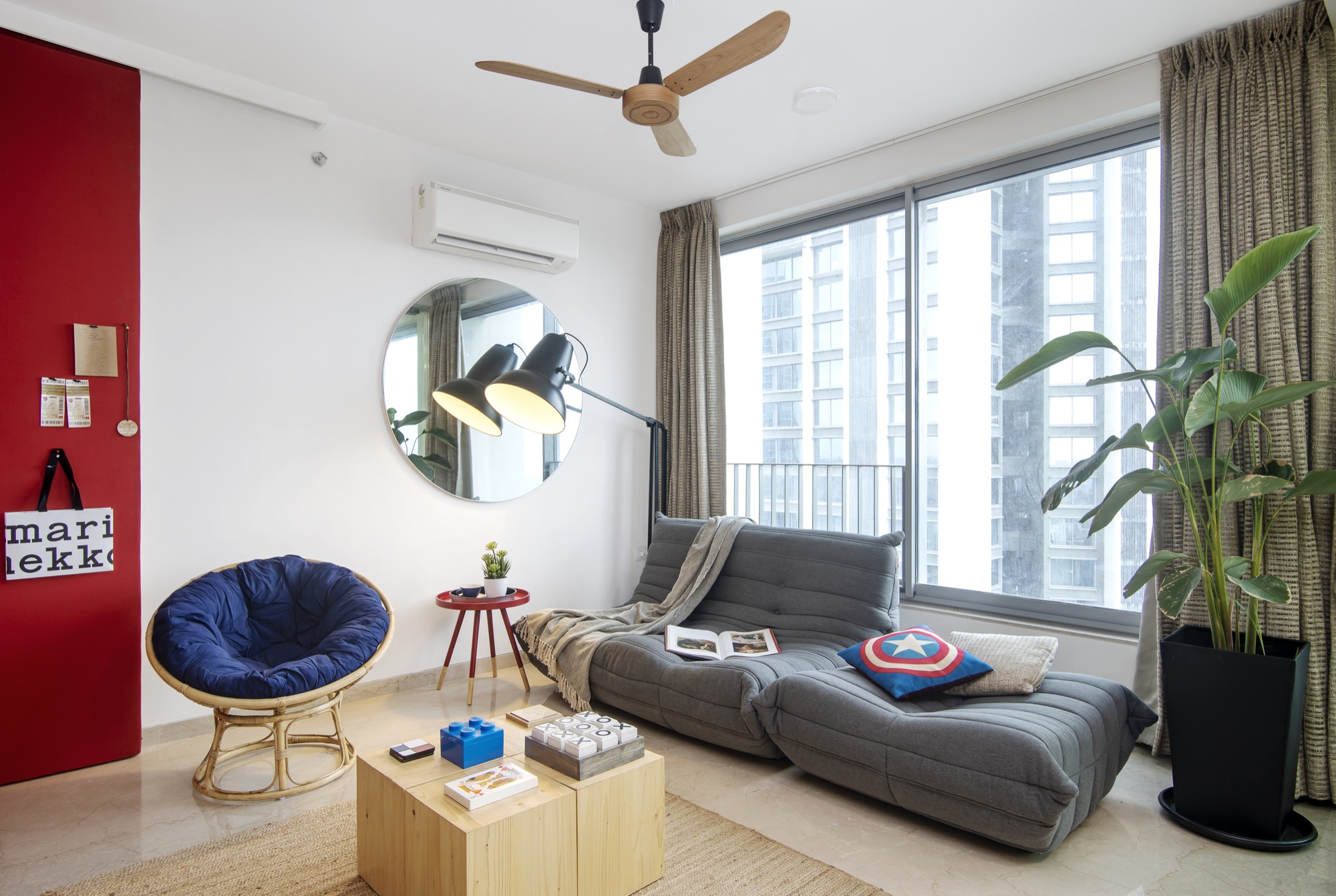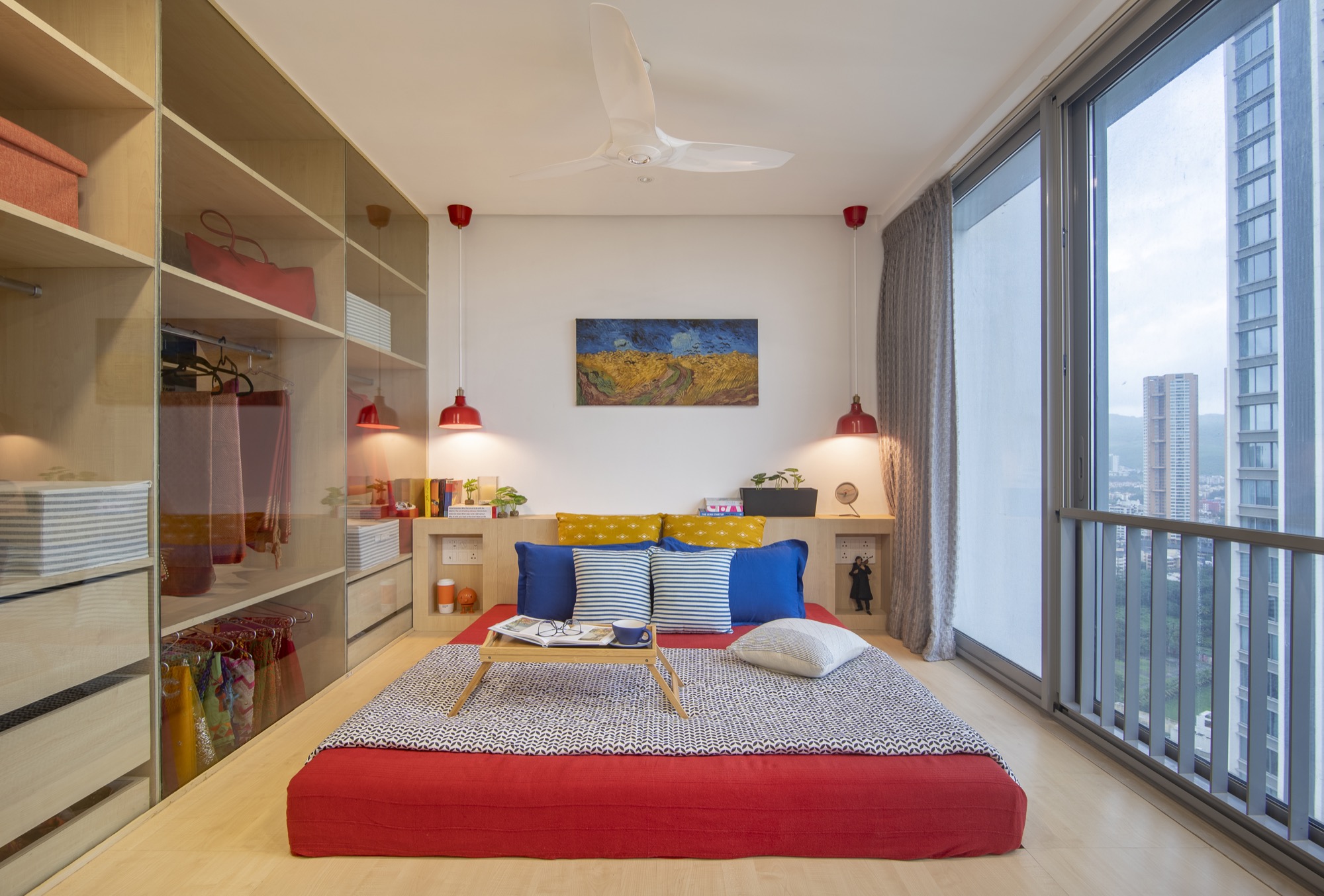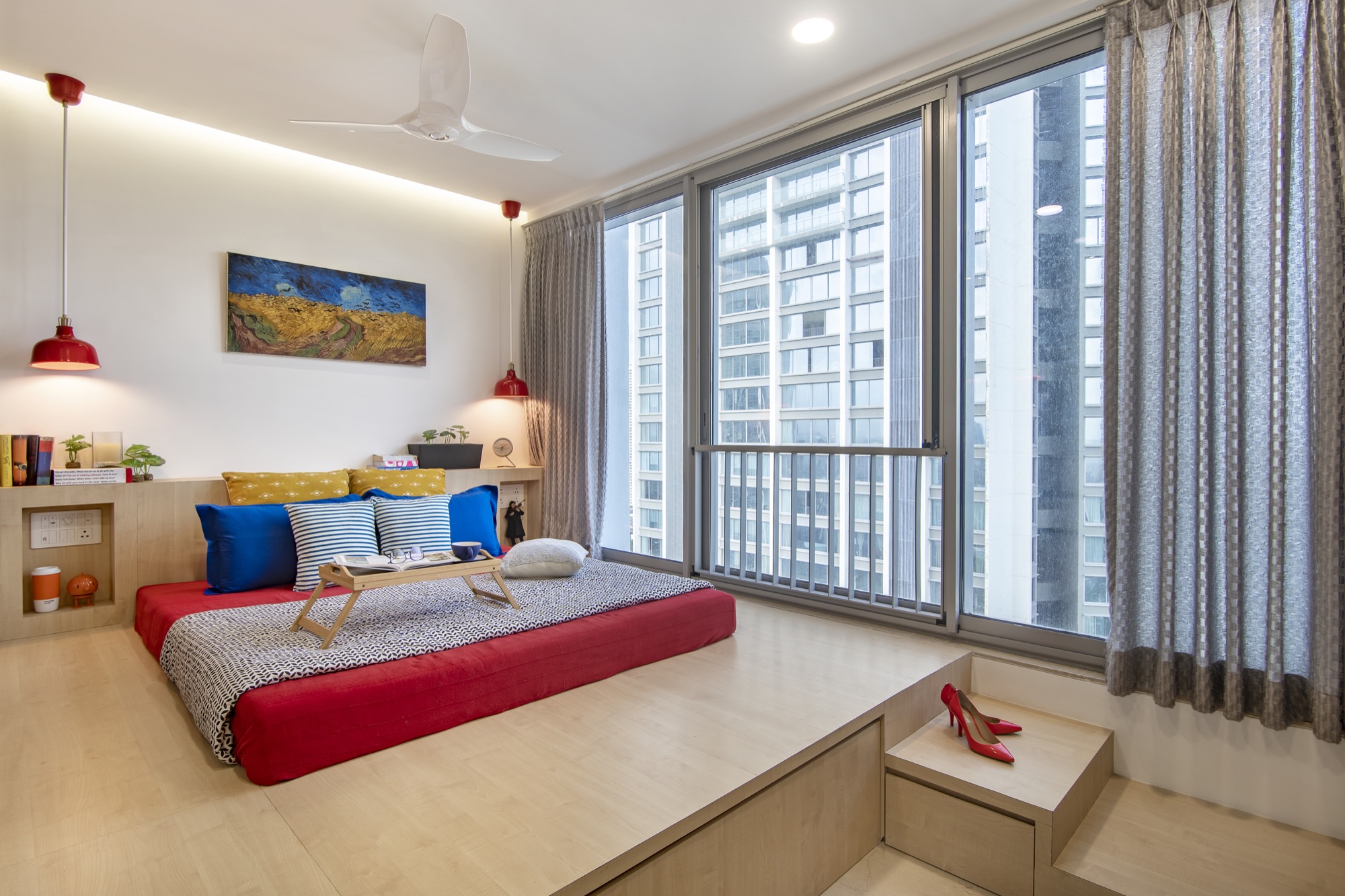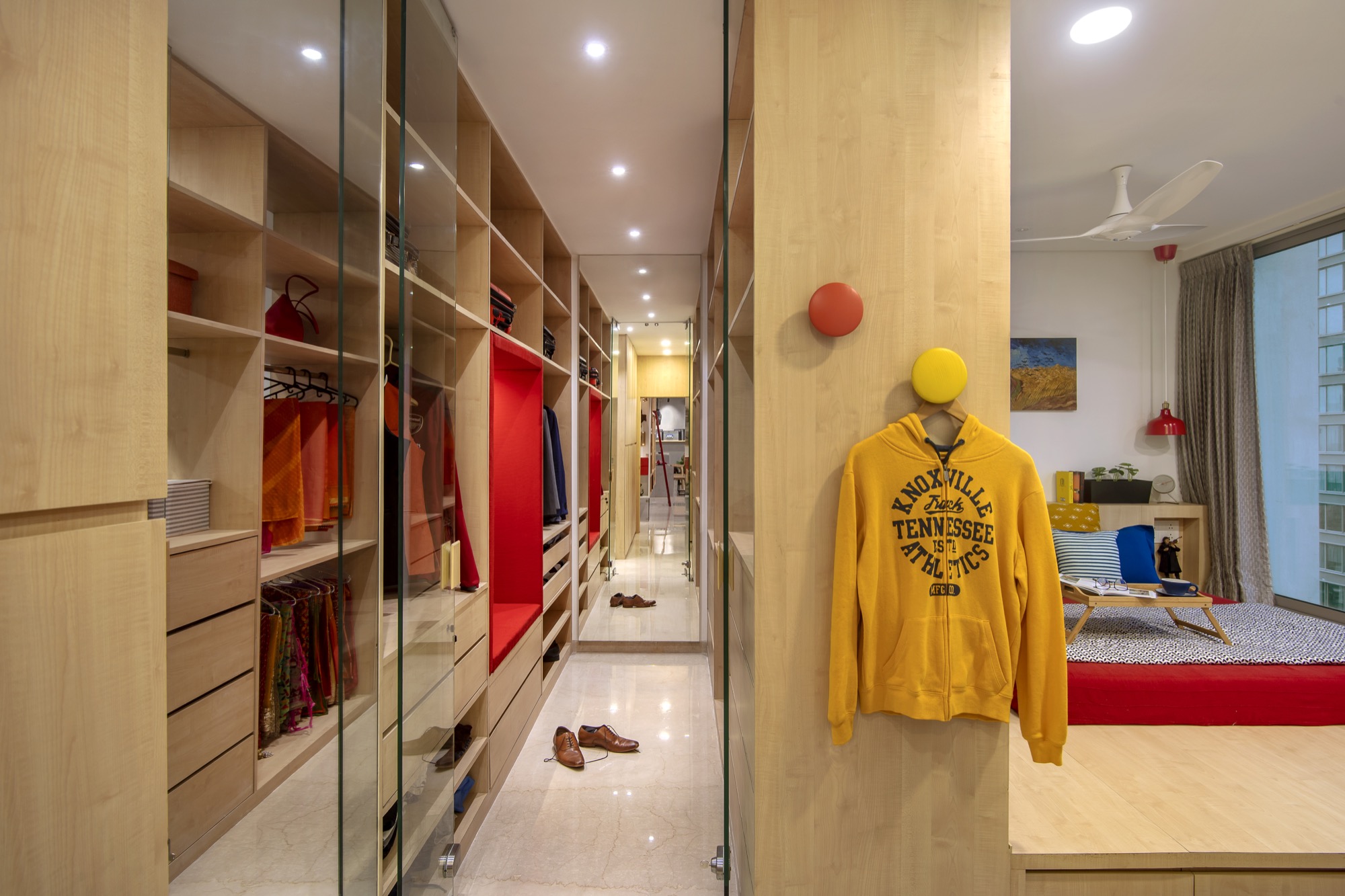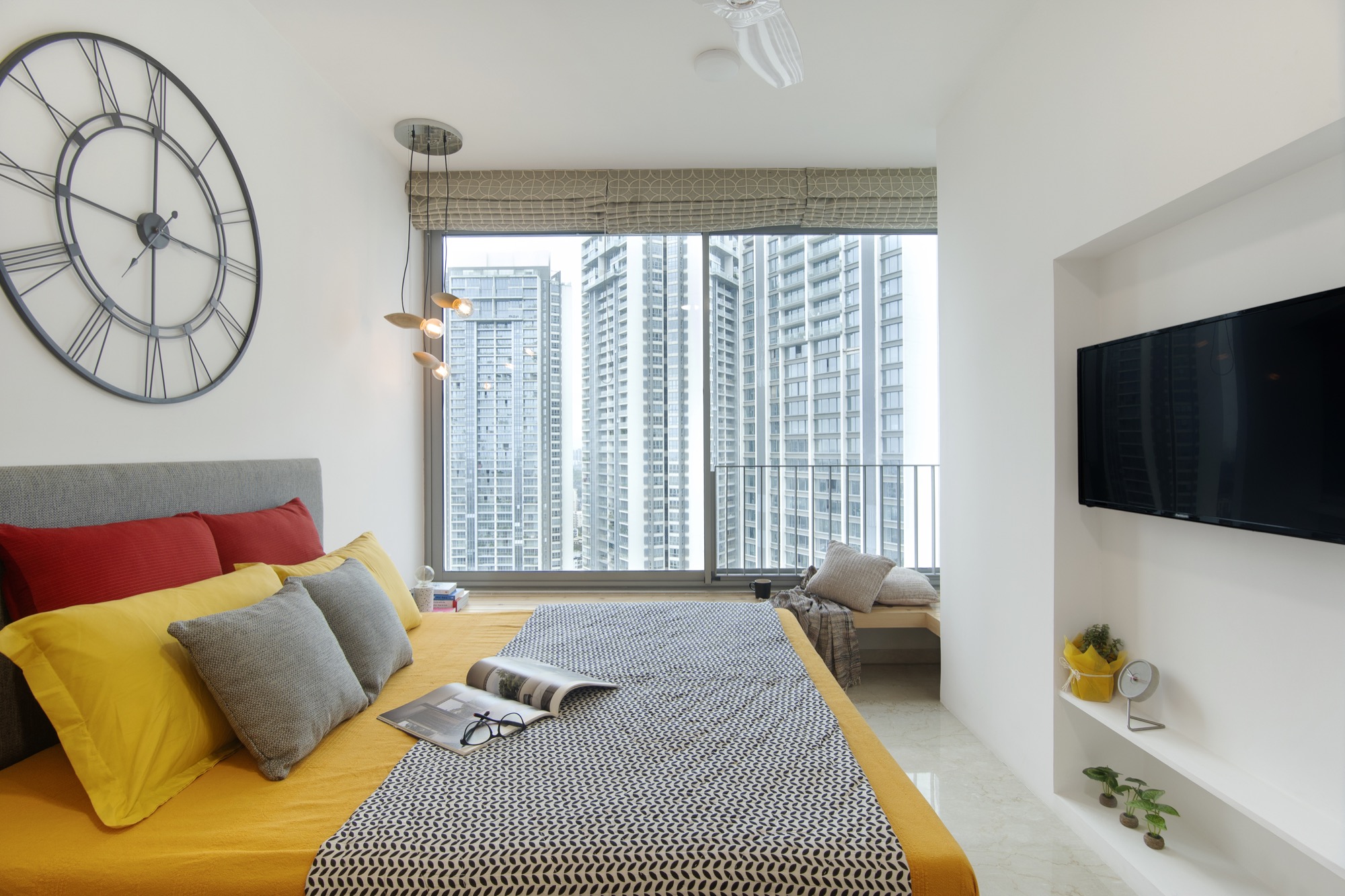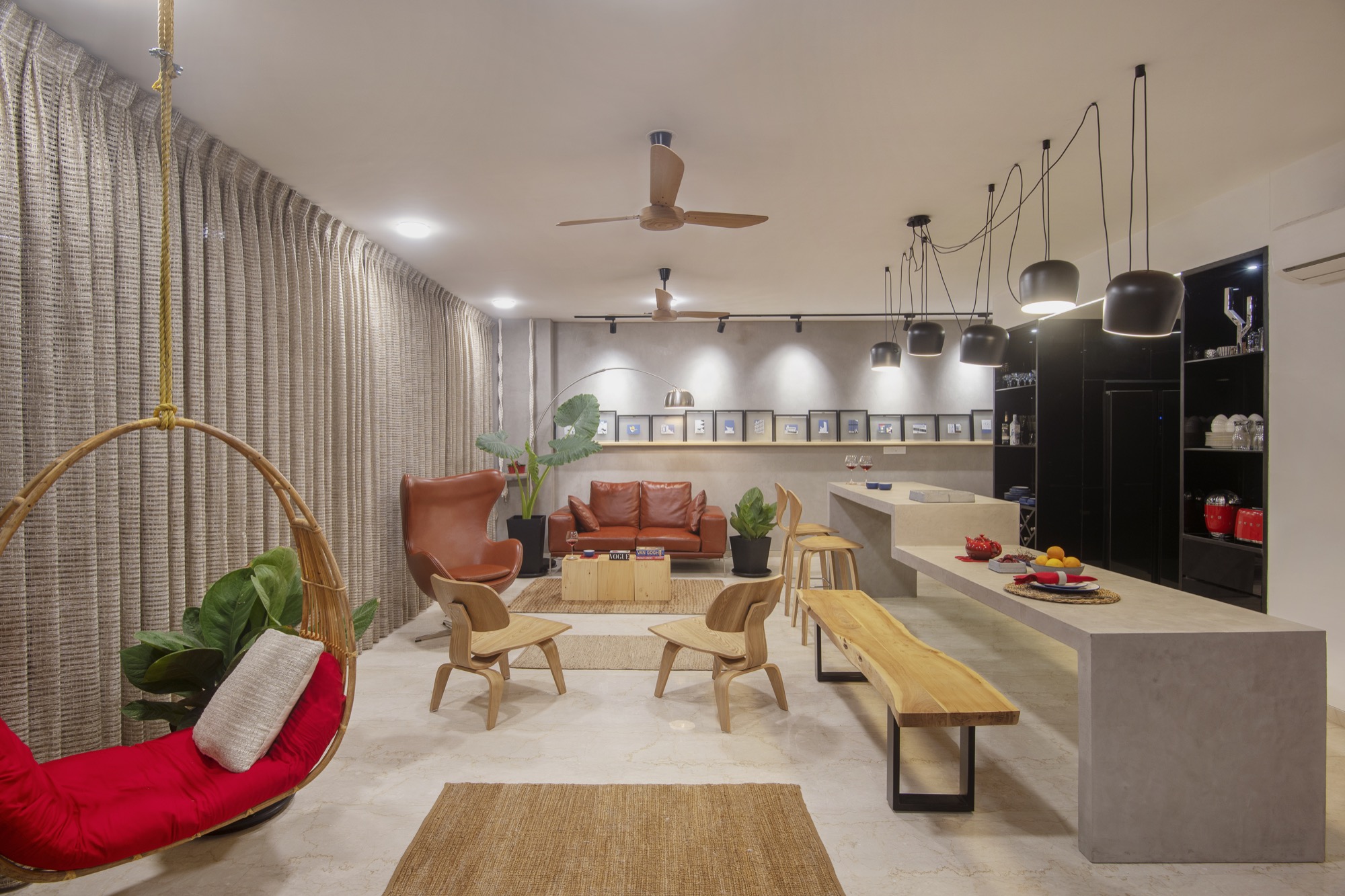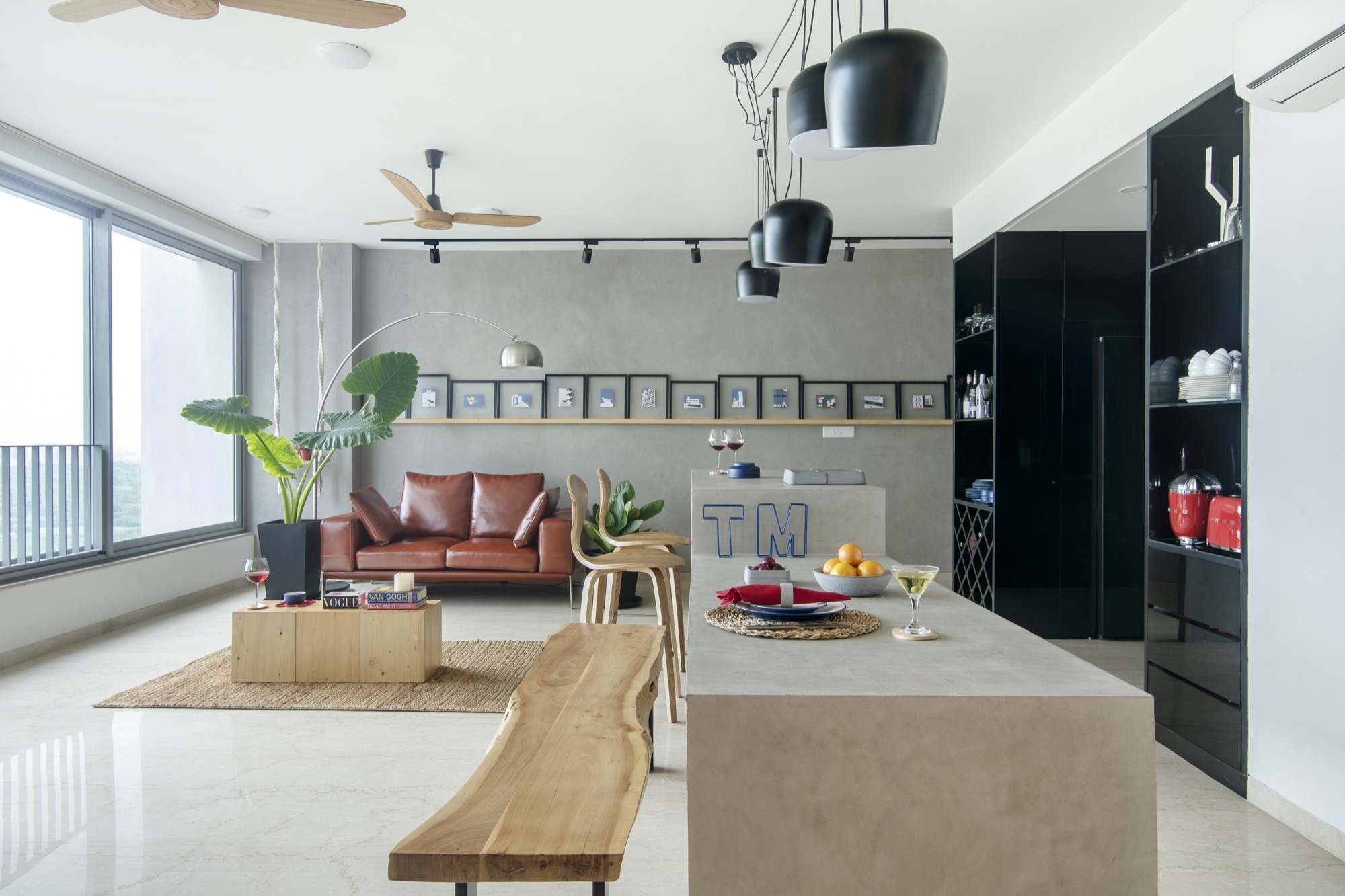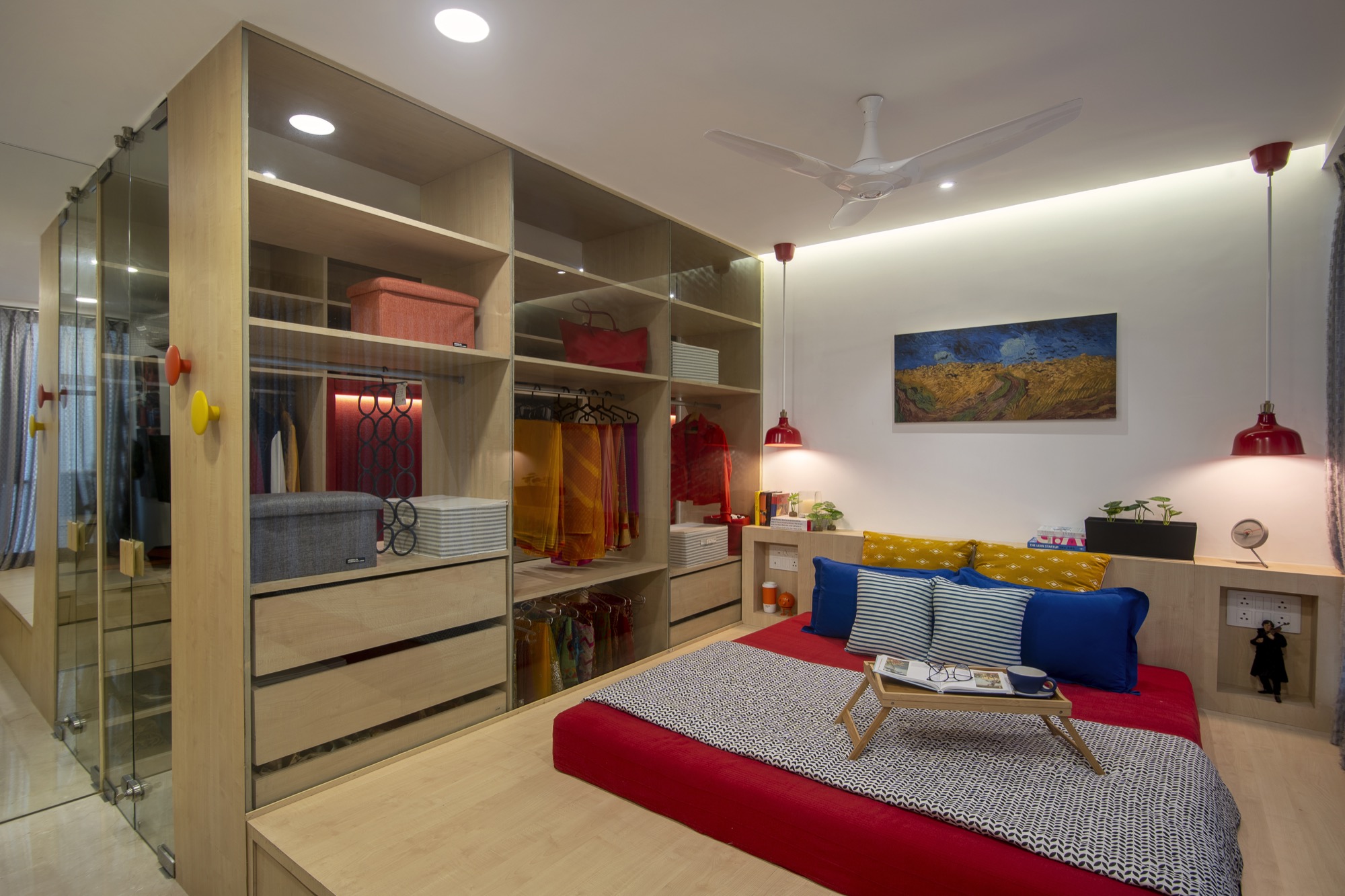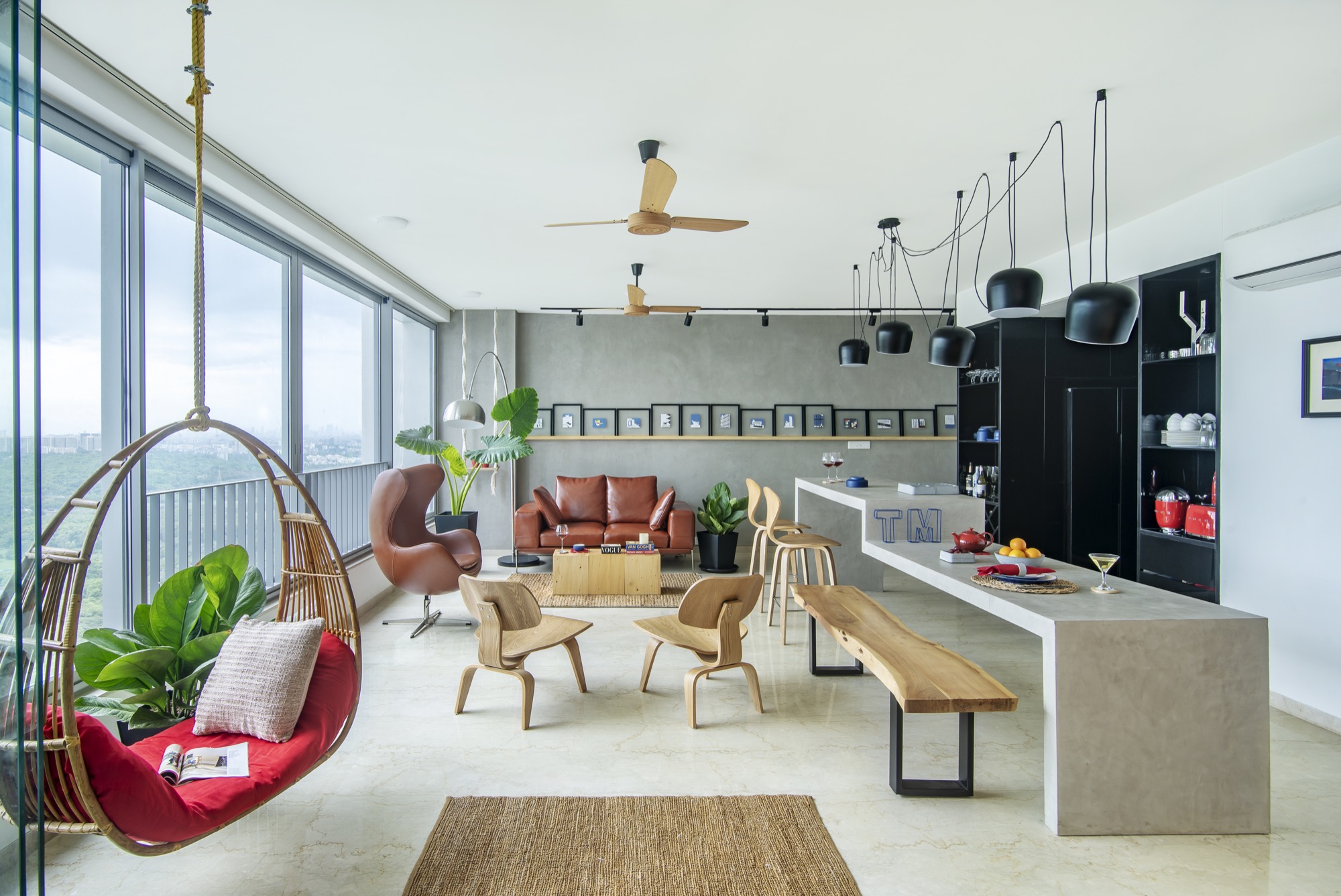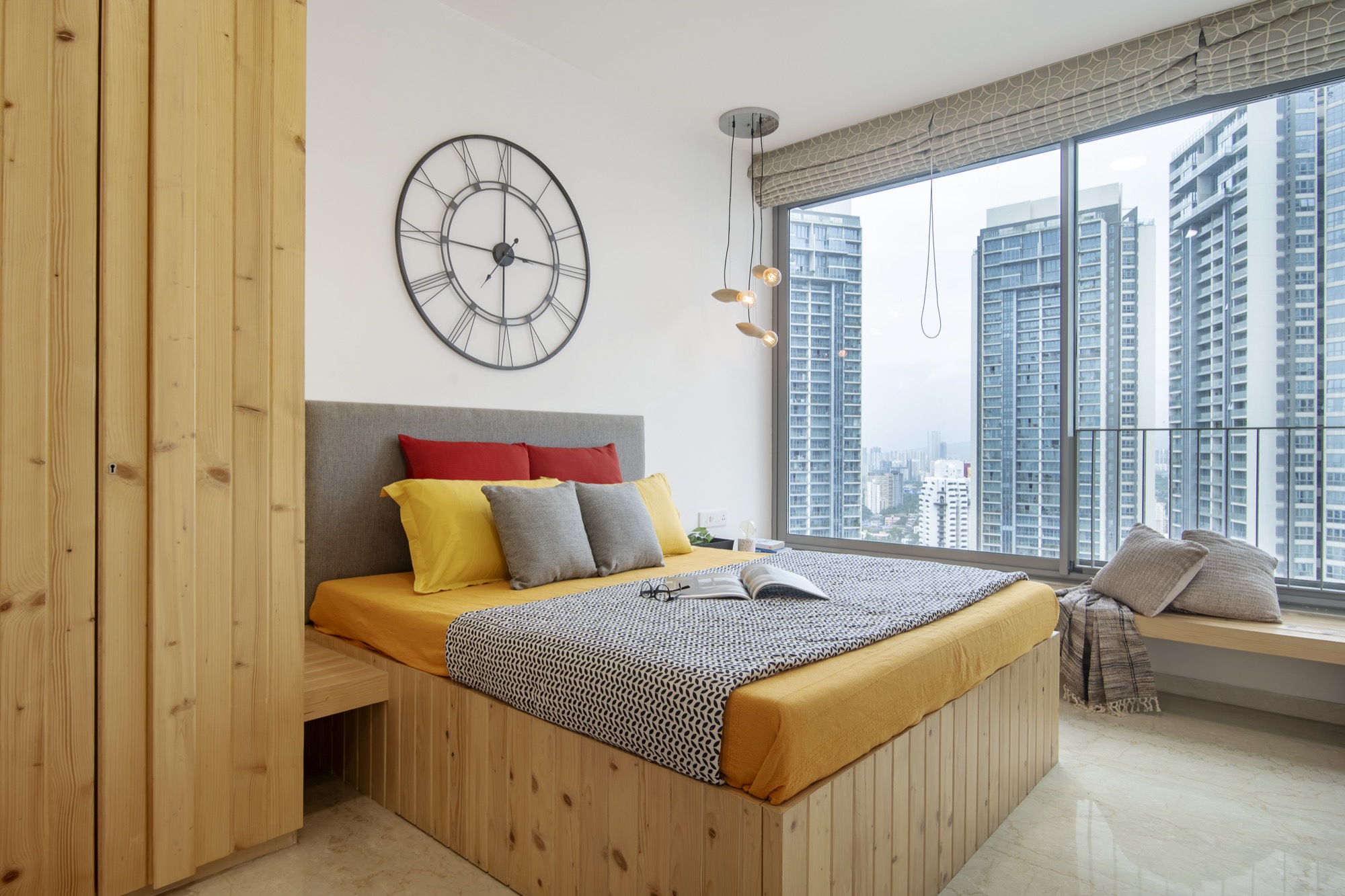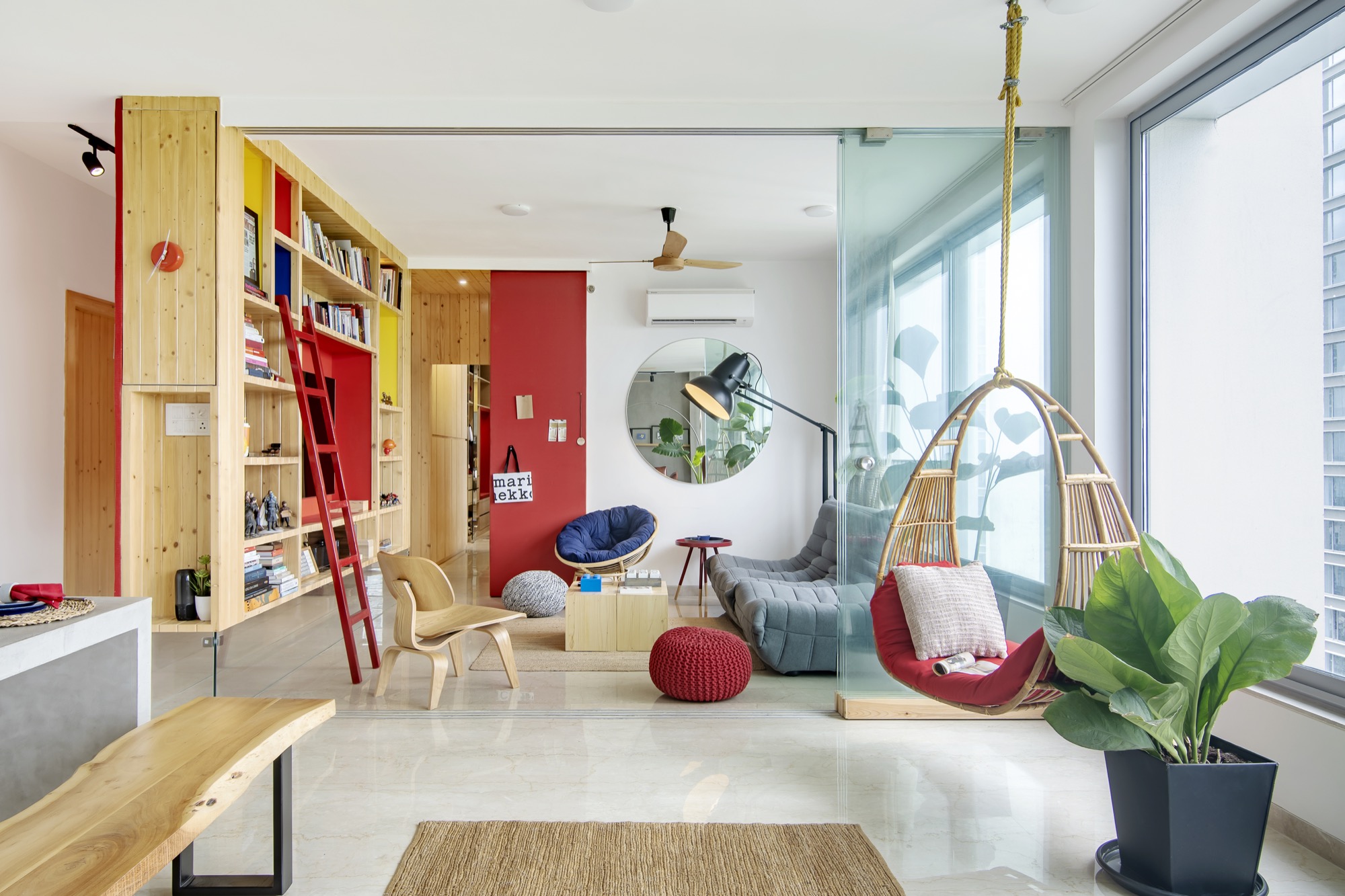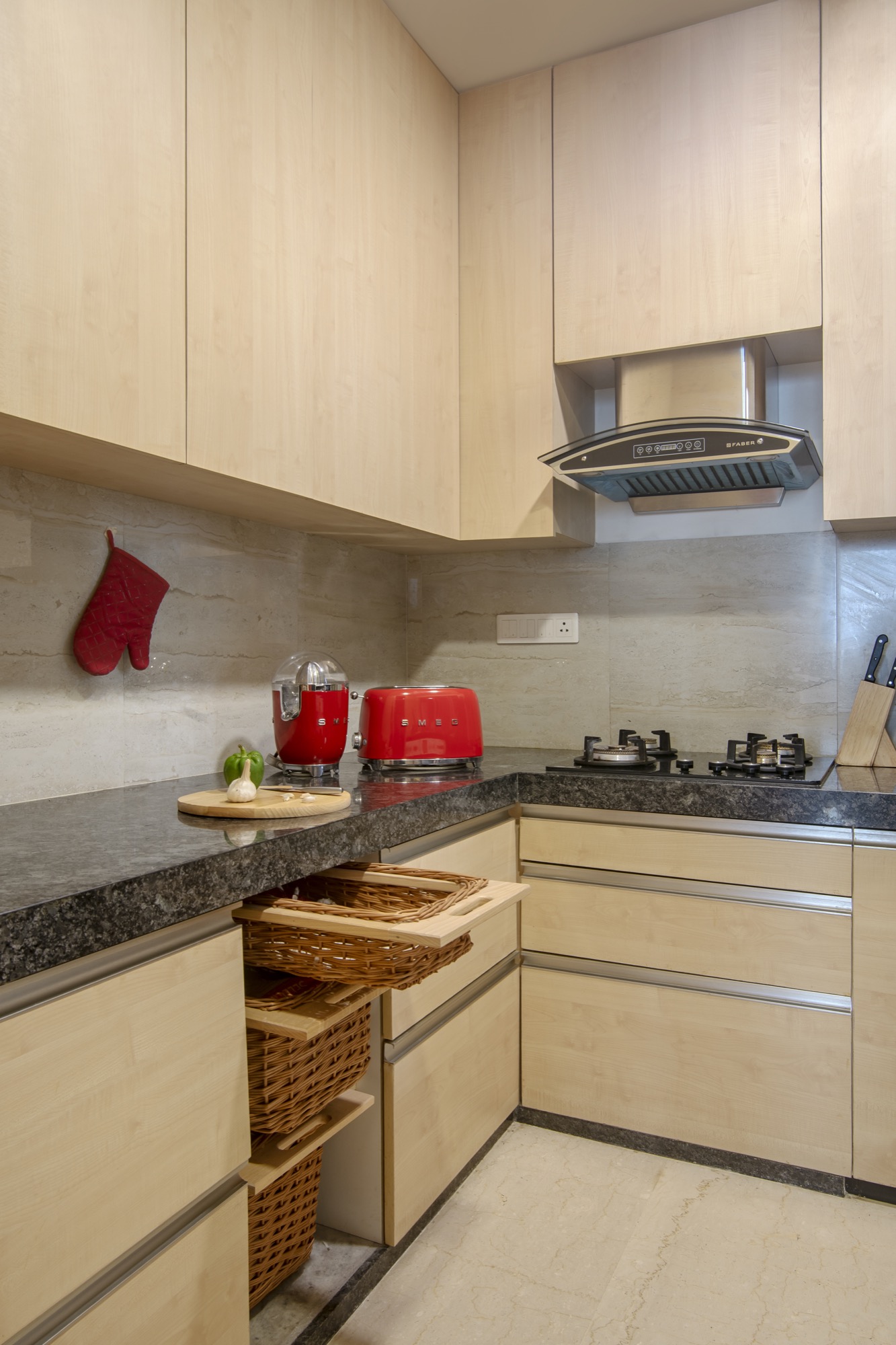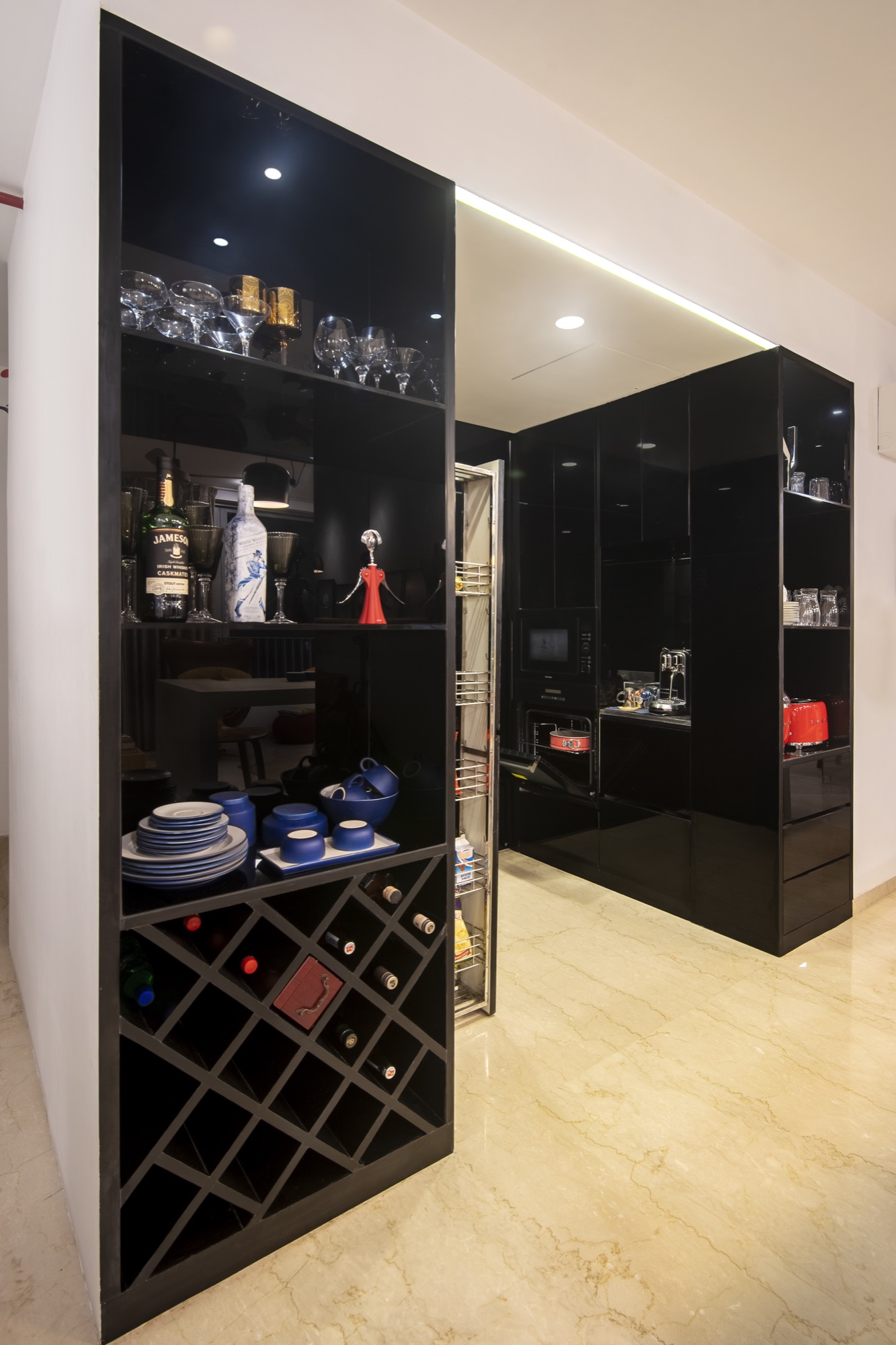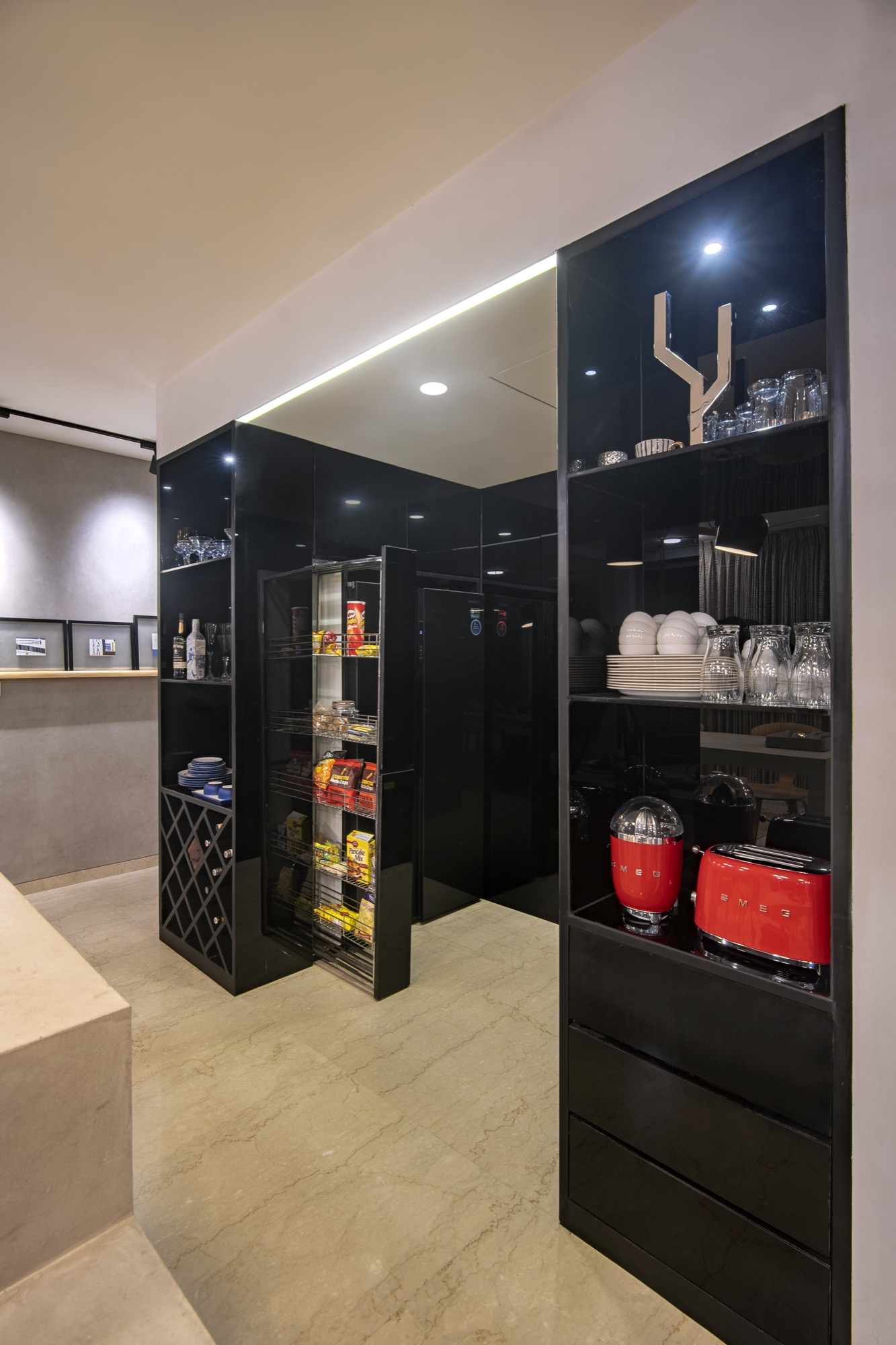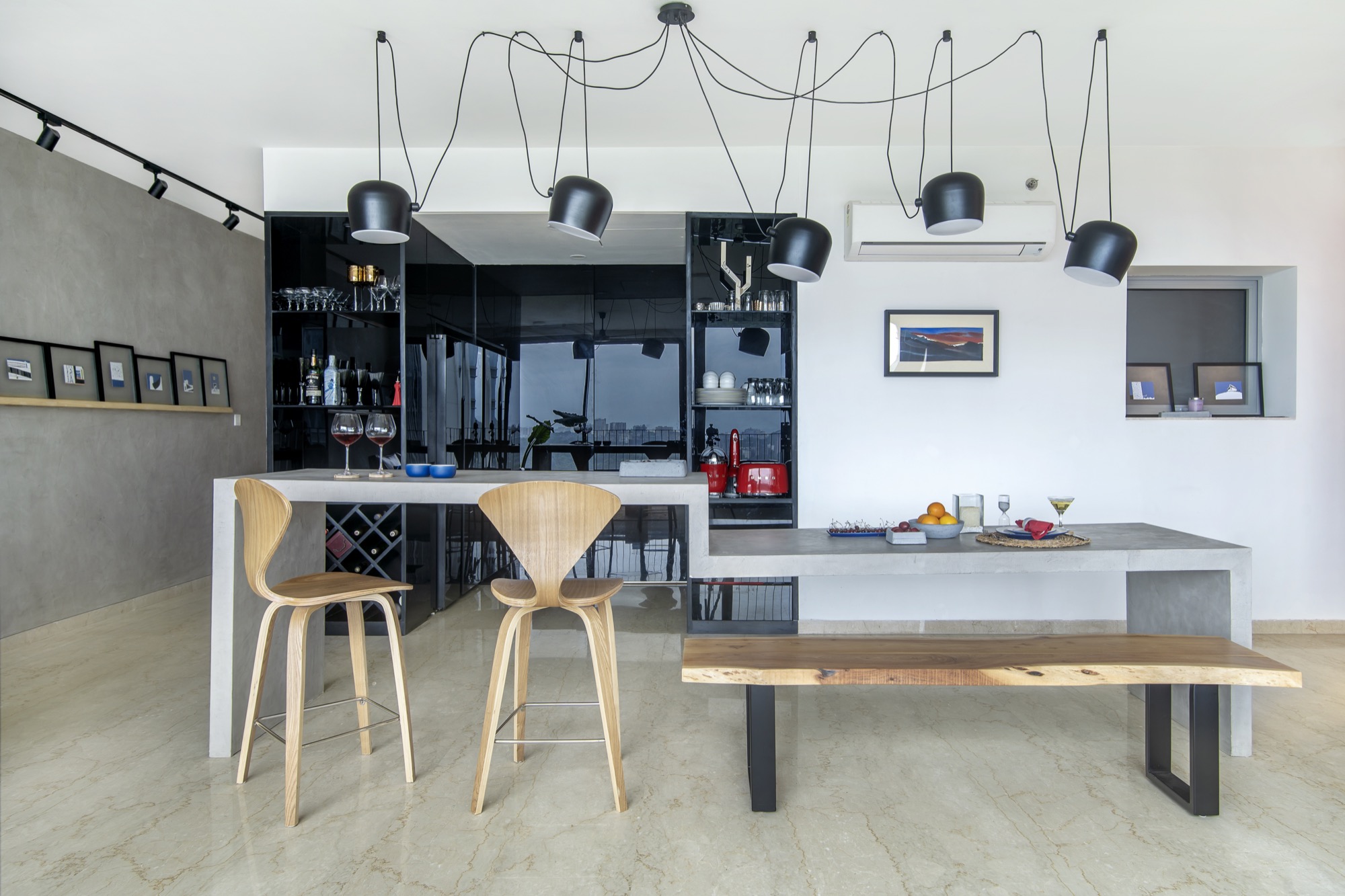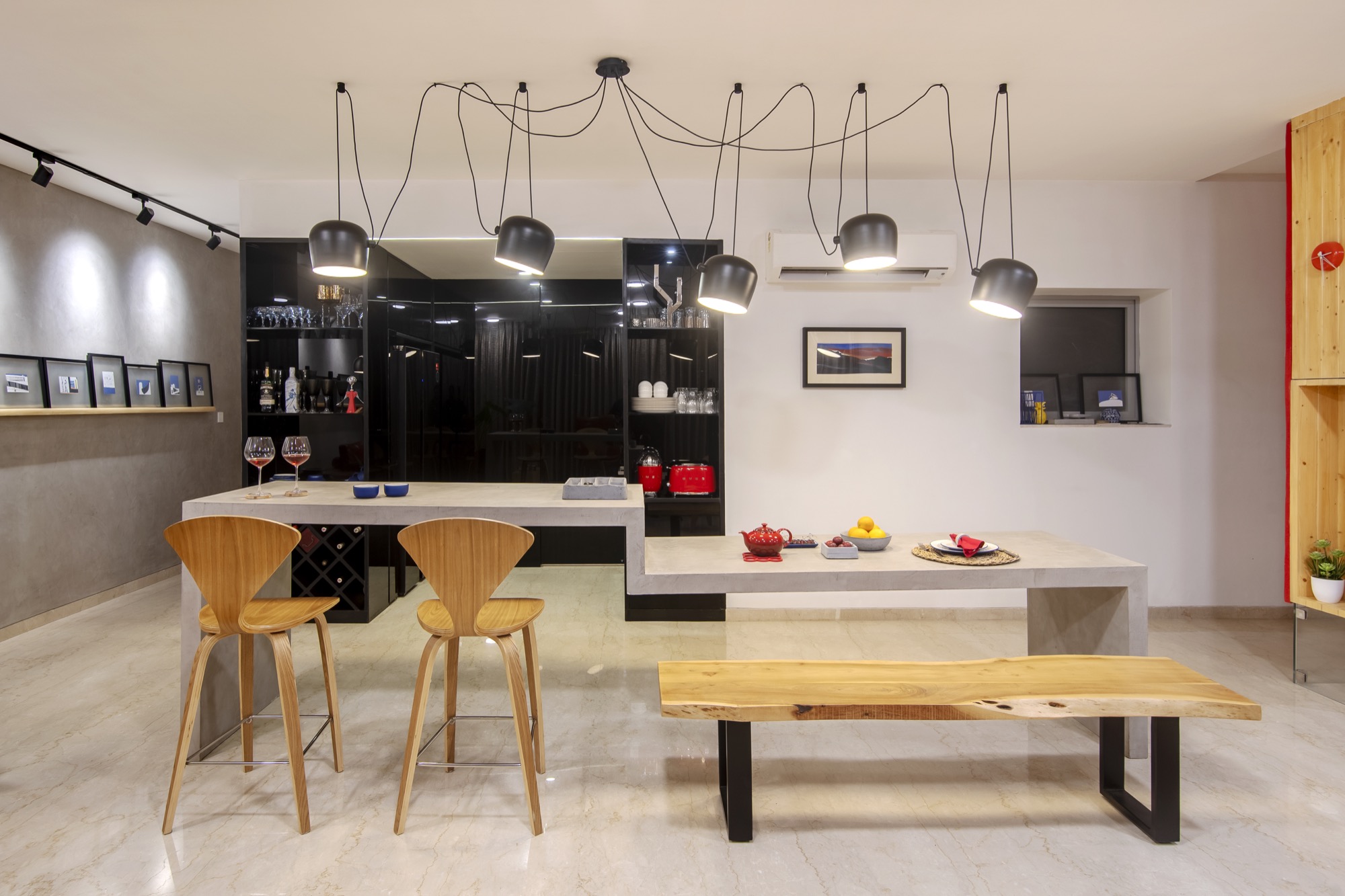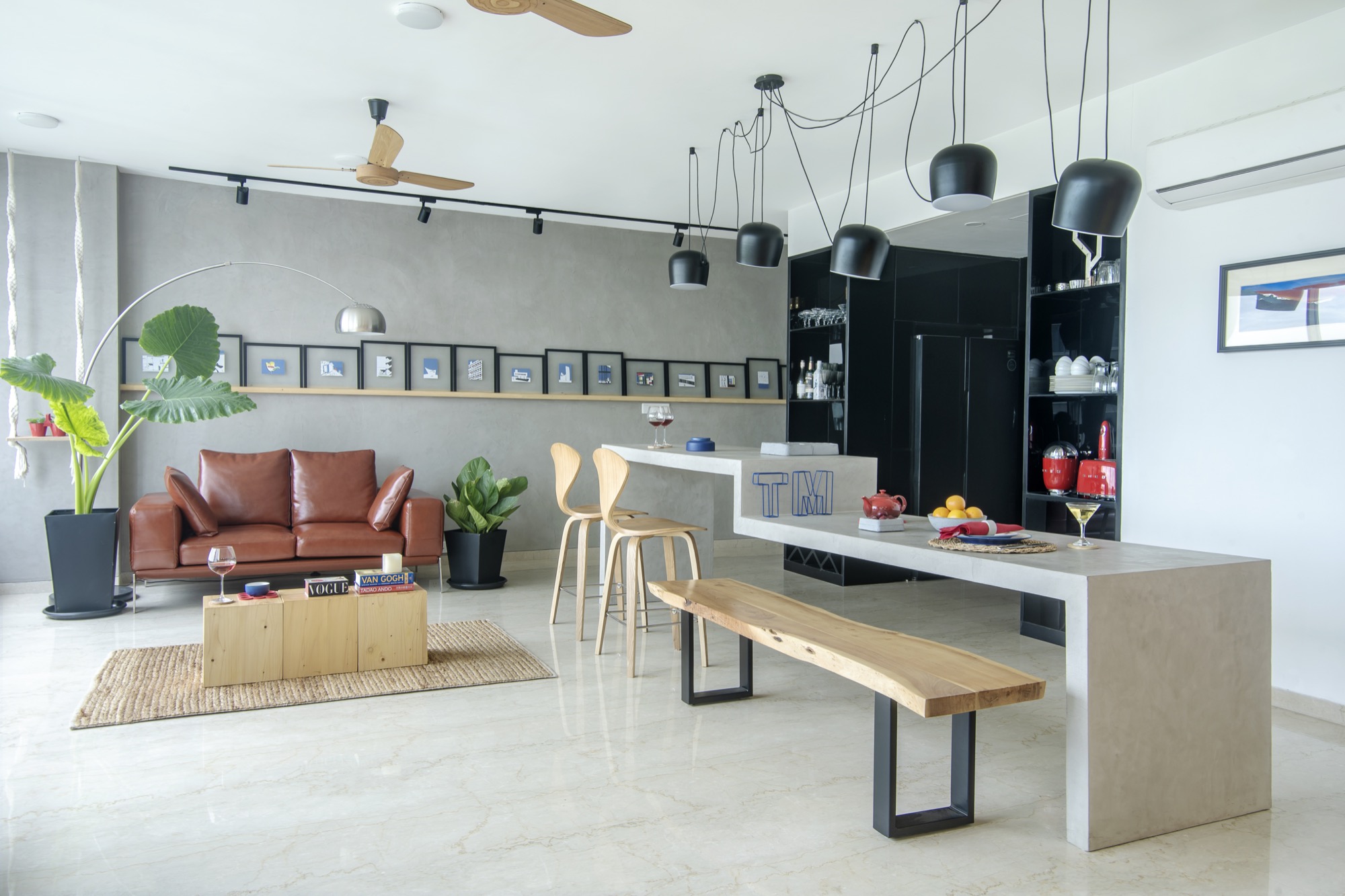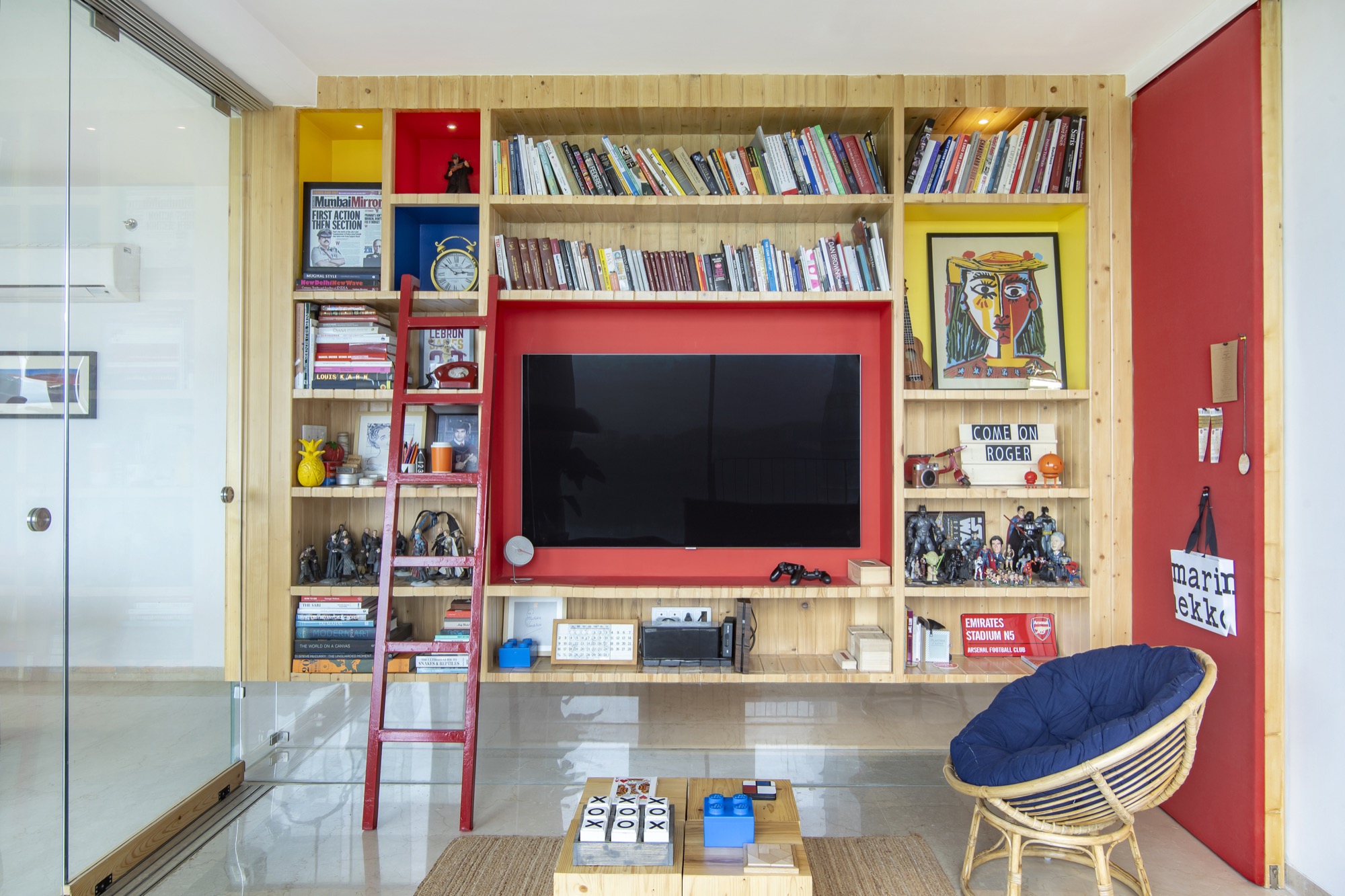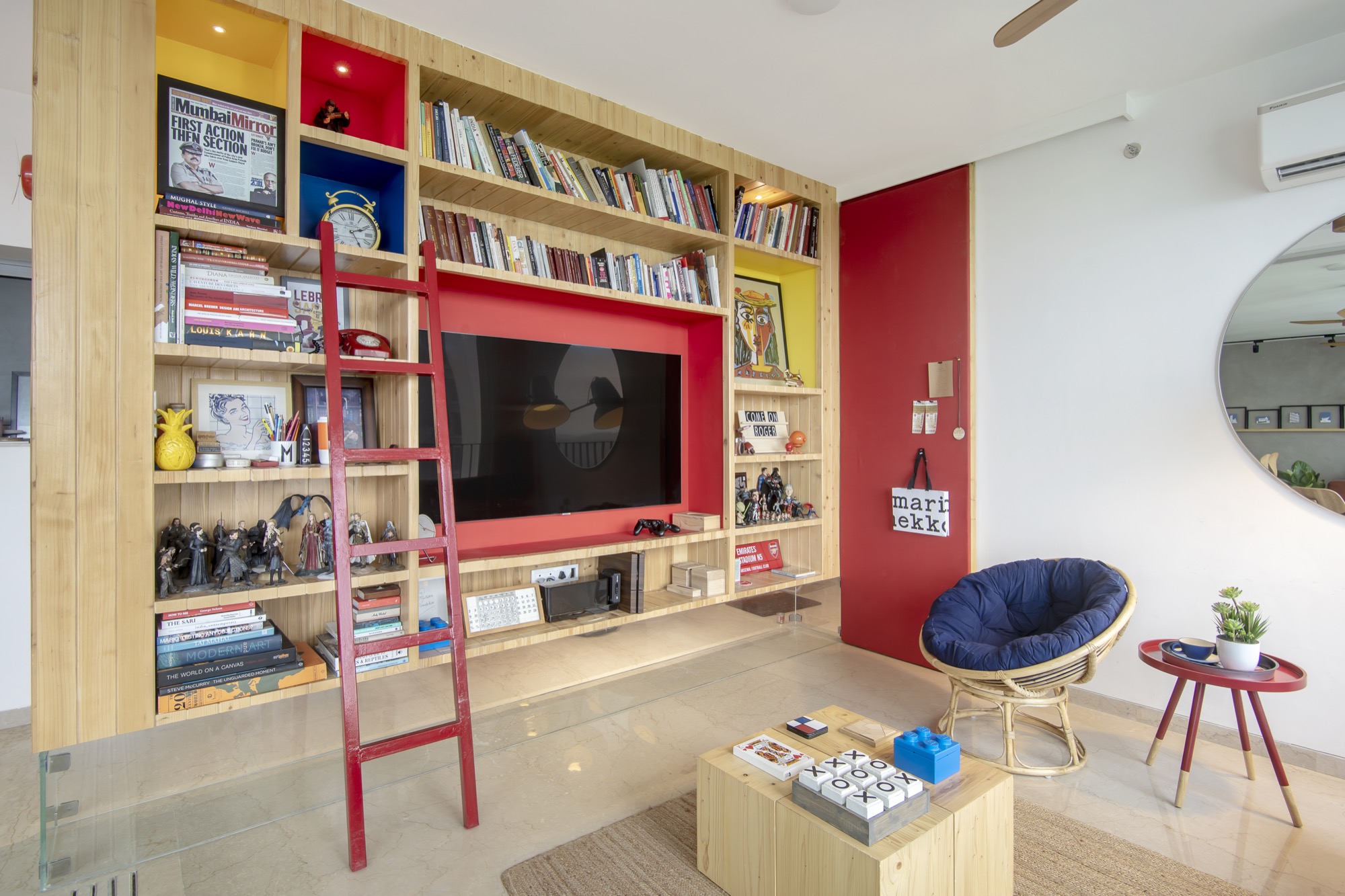All in all, the apartment speaks of contemporary living – inspired heavily by the modernist movement of the 20s and seems to consider Marie Kondo’s system of simplifying and organizing one’s home by getting rid of physical items that do not bring joy into one’s life. Something all of us, as hoarders need to understand –subtraction is the addition!
This 31st floor apartment is a part of a residential development in Goregaon, Mumbai’s modern suburb. This development called – the Oberoi Garden City, abutting the Arey green cover, was created with a vision to provide a holistic living experience to its residents. Today,it fulfills its residents’ live, work, play and other lifestyle needs all in the same location, a unqiue feature – very few in Mumbai enjoy.
Old design colleagues came together to design this apartment from first principles, by beginning on a clean slate – an open plan – which meant removing of all the non-structural walls from the space to get a free plan layout intended to customize the space exactly as per the need and usage of its inhabitants – a young couple – professionals practicing law and design!
Formerly planned as a three-bedroom apartment, an entire bedroom was collapsed as a part of the living room to accentuate the expanse of this public space – the most used area in the apartment. A sliding glass partition along channels enabled one to make this space versatile and convertible into a private one if ever needed.
Due to its vantage, the view was the hero of this project and every space respected and aligned itself to it. The living and dinning spaces have a full-scale view of the green Aarey colony while the bedrooms have urban and semi-urban views.
Conceptually, the apartment is planned along a single spine where all functions are sequentially arranged along a central axis. Public spaces merge into semi-public functions and eventually private spaces.
Storage was made as per things owned by the couple as well as their future needs. As a part of the design process, one listed down all things one owned to the last bit and then designed a place for everything instead of the of the other way round. One refrained from making the usual prescribed storage– a wardrobe and a bedbox in every room – to question the stereotype of – the more the storage, the better the apartment.
Space saving and accentuating techniques have been employed to the utmost. The ceiling has been used extensively – from curtains and blinds starting from the top instead of the window frame to enhance the height of the space to the roof suspended bookshelf, the dangling tasseled contemporary chandelier of the aim lights by Bouroullec brothers , a swing as a shelf and a swing as a seat– all complemented with a floating cantilevered dinning table cum bar – to relieve the floor from the clutter and give the impression of a free flowing space –the flooring is cleverly designed with a single color marble floor, to give an impression of oneness in the space.
The bar and kitchen have been divided into wet and dry zones with the dry zone becoming a part of the living room. Black glass has been used to conceal the functions of the refrigerator, oven, microwave and a pantry, as this space too became public and hence only the home dweller will be able to discover the aforementioned facilities. The entire house does away with metal fittings and handles; opening fixtures are intelligently built into the design. Sliding doors help to save and create space.
The bookshelf is a monolith suspended from the ceiling with a TV cabinet in the middle and a tag-board with a study at its back. On one side, a vertical temple finds its sanctum and the other has a multipurpose cupboard. Design publications, books on India, curious stationery and figurine collectibles fill this system with character and personality – an extension of the homeowners.
The master bedroom accommodates a glass walk-in wardrobe with an inbuilt seating, which makes a collage of colors and clothes from the outside. The bed is a raised platform that gives impression of infinity as it merges with the view of the room. Shoe cupboards and tie pullouts ensure a place for every possession.
The guestroom features an interesting bench that converts into a side table, it gives the visitor the space for her belongings and a seating for the dense urban view of the concrete jungle.
Finishes, furnishings and furniture are light and neutral – in color and form – from pinewood to concrete, leather to jute, the palette is basic and primitive. Classic furniture pieces have been collected – the Egg Chair, the Aim light, the Giant floor lamp, molded Plywood Chairs amongst others. Sculptural and scaled indoor plants find their nooks in this aptly naturally lit house. Primary colours dot and punctuate the entire space paying homage to modernism – from the Buahaus to De stijl. Prints and reproductions of masters of art, design and architecture are highlighted against the neutrality of the shell– from Paresh Maity’s watercolor gifted by the artist himself to the couple, Le Corbusier’s buildings sketched by a French illustrator, Van Gogh’s Wheatfields reproduced on canvas by the museum, Picasso’s print of Guernica to Jamini Roy’s Three Women’s National Gallery poster. The art and accessories speak of the extensive travel, interests and stories of the inhabitants. The nameplate is a scrabble set and concrete letters spell out the house number!
All in all, the apartment speaks of contemporary living – inspired heavily by the modernist movement of the 20s and seems to consider Marie Kondo’s system of simplifying and organizing one’s home by getting rid of physical items that do not bring joy into one’s life. Something all of us, as hoarders need to understand –subtraction is the addition!
Project Facts
Typology :Residential Apartment Interior
Name of Project :ESQUIRE
Location :Mumbai
Name of Client :Mr. & Mrs. Tanmay Patnaik
Super Built-Up Area :2250 sq ft
Carpet Area :1370 sq ft
Start Date :25-04-2018
Completion Date :25-12-2018
Photographer : Biju Gopal
CONSULTANTS
Interior Design : Limehouse Design Studio
Interior fit out : Design Demarche
Surfaces : Evolve
Accessories : Gomaads

